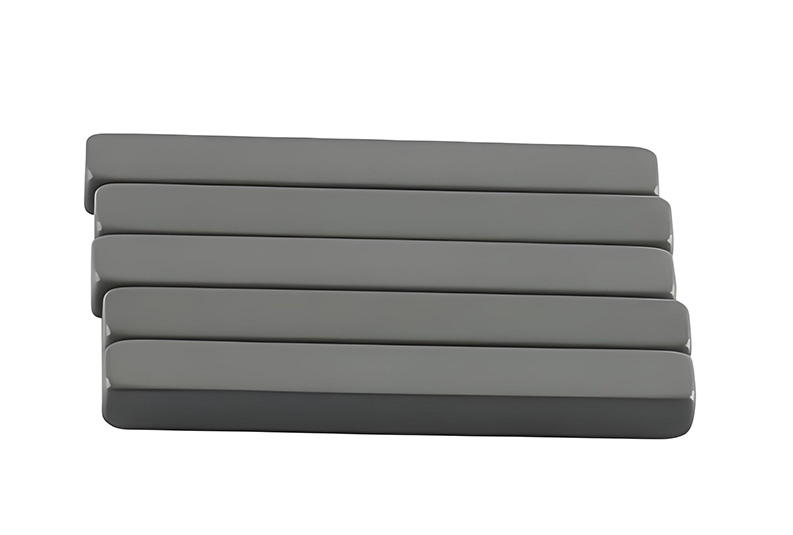

In the wave of modern industrial and technological development, the demand for high-performance materials is increasing. As a unique permanent magnet material, bonded NdFeB stands out in many fields with its excellent design flexibility and outstanding magnetic properties, and has become the preferred material for many designers and engineers.
Bonded NdFeB is made by mixing rapidly quenched NdFeB magnetic powder and a binder, and is made by pressing or injection molding. This material not only retains the excellent magnetic properties of NdFeB such as high remanence, high coercivity, and high magnetic energy product, but also greatly improves its design flexibility through the use of a binder. Compared with traditional sintered NdFeB, bonded NdFeB can achieve one-time molding of high precision and complex shapes without complex machining during the manufacturing process. This feature makes bonded NdFeB show unique advantages in micro motors, sensors, and other precision components that require high precision and complex shapes.
Design flexibility is a highlight of bonded NdFeB. Through mold control, it is easy to make ring-shaped, tile-shaped, and even more complex special-shaped magnets. This flexibility not only meets the designer's precise requirements for the shape and size of components but also greatly shortens the product development cycle and reduces production costs. At the same time, bonded NdFeB has high mechanical strength, is not easy to break, and is convenient for large-scale mass production, further enhancing its competitiveness in industrial applications.
In addition to design flexibility, the magnetic properties of bonded NdFeB are also excellent. Although its magnetic properties are slightly lower than those of sintered NdFeB, they are much higher than traditional permanent magnet materials such as ferrite. This high-performance magnetic property enables bonded NdFeB to achieve higher efficiency in micro-motors, sensors, and precision components, and improve the overall performance of the product. Especially in scenarios with extremely high dimensional accuracy requirements, such as humanoid robots and low-altitude aircraft, bonded NdFeB has become a key material in these fields due to its excellent magnetic properties and design flexibility.

Bonded NdFeB has a wide range of applications, covering office automation equipment, electrical machinery, audio-visual equipment, instrumentation, small motors, and metering machinery. In the computer field, bonded NdFeB is one of the main materials for hard disk drive magnets. Its high precision and stable magnetic properties provide strong guarantees for data storage and reading. In addition, bonded NdFeB is also widely used in automotive micro-motors and sensor products, such as wiper motors, EPS sensors, etc., providing important support for the intelligence and automation of automobiles.
With the advancement of science and technology and the development of industry, the application prospects of bonded NdFeB will be broader. In emerging industries such as new energy vehicles, intelligent manufacturing, and aerospace, bonded NdFeB will play its unique advantages and inject new vitality into the development of these fields. At the same time, with the continuous improvement of bonded NdFeB manufacturing technology, its performance will be more stable and the cost will be further reduced, providing possibilities for application in more fields.
In summary, bonded NdFeB, as a preferred material with equal emphasis on design flexibility and magnetic properties, plays an increasingly important role in the development of modern industry and science and technology. Its unique advantages and broad application prospects make bonded NdFeB one of the important research directions in the field of materials science in the future.
Contact

We will contact you within 24 hours. ( WhatsApp/facebook:+86 15957855637)



